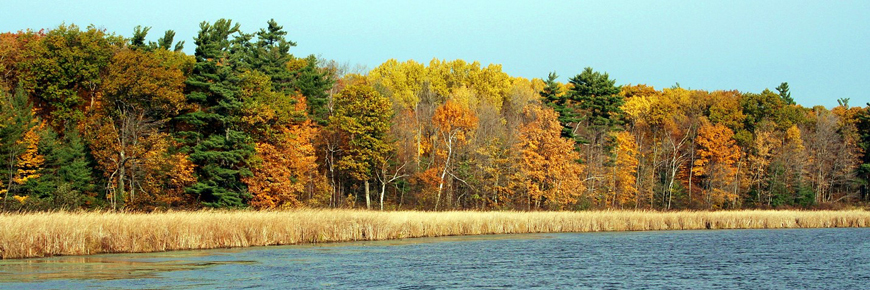
Plants and wildlife
Thousand Islands National Park
Raccoons | Ticks | Stinging and other biting insects | Noxious plants | Bears | Coyotes
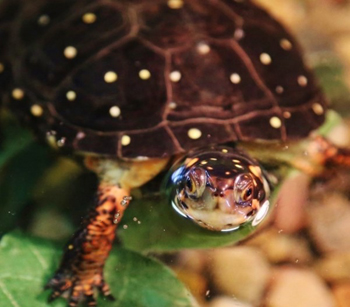
Thousand Islands National Park is an excellent place to see wildlife. Please follow some simple rules to stay safe and help protect park critters.
• All the wild animals you encounter in Thousand Islands National Park could be dangerous if cornered, approached too closely, or harassed.
• Do not feed wildlife! Ensure that your food and garbage are always secured, to prevent attracting animals to your campsite.
• Keep pets on a leash at all times.
• Black bears and coyotes may be present in the park. They are most commonly observed on mainland properties, but have been found on the islands periodically. Read You are in Bear Country and Coyotes and Hiking Safety or get the information at the Visitor Centre. Please report all bear and coyote sightings to park staff.
Raccoons
Raccoons are common throughout the park and very opportunistic about finding food. If they get into a cooler or garbage, they may keep coming back to that same spot and could damage property or become aggressive towards humans. Please store all garbage and food properly. Never feed raccoons.
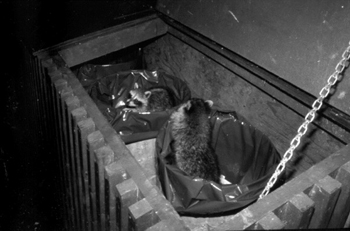
- Poor health and premature death can result from wildlife consuming food other than their natural food supply.
- When fed, animals become habituated to human contact and are at higher risk of becoming aggressive. Keeping a safe distance from all wildlife and viewing them in a respectful manner will reduce the likelihood of a negative wildlife encounter.
- Raccoons are potential carriers of rabies. If you see a raccoon displaying aggression or approaching humans, please report the incident to park staff. Learn more about rabies on the Ontario Ministry of Natural Resources and Forestry’s Website.
Ticks

Ticks and your health
Ticks and Lyme disease
Throughout Thousand Islands National Park, from April to November, there is a small chance of being exposed to Lyme disease if bitten by an infected blacklegged (deer) tick. Lyme disease is a serious illness; however, it's easy to prevent and treat when caught early.
For more information on Lyme disease, blacklegged ticks, and how to protect yourself from tick bites while enjoying the outdoors, please visit the following websites:
The Ontario Ministry of Health and Long Term Care’s fact sheet on Lyme disease
Public Health Agency of Canada’s fact sheet on Lyme disease
Public Health Agency of Canada - Facts about Lyme disease
Government of Ontario - Lyme disease
Stinging and other biting insects (wasps, bees)
Biting insects are common on the Thousand Islands, especially in late summer. If you are severely allergic to bites, it is important that you carry your prescribed medication as medical assistance may be some distance away. For more information on wasps visit Health Canada.
If you spot a nest on one of our structures please report it to park staff.
Noxious plants
There are a number of plants in Thousand Island National Park that can cause irritation and other medical issues. You can minimize the risk of coming in contact with these plants by learning how to identify them and by staying on marked trails.
Wild Parsnip
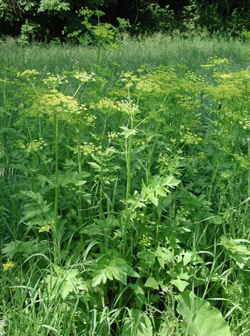
Wild Parsnip is an invasive species in Ontario, originally from Europe and Asia. It is found throughout Eastern Ontario including the Thousand Islands region. The sap from Wild Parsnip can cause skin irritation. For more information visit Wild Parsnip.
Giant Hogweed
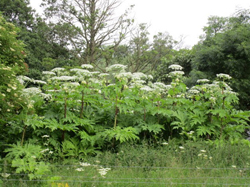
Giant Hogweed is a garden ornamental from southeast Asia that is now present in Ontario. Similar to Wild Parsnip, Giant Hogweed sap can cause dermal photosensitivity of skin, which when exposed to sunlight can cause burns. For more information visit Giant Hogweed.
Poison Ivy
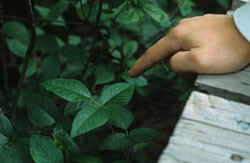
There are many places in the Thousand Islands where you can find poison ivy, a climbing plant of the sumac family. It grows on sandy, stony, or rocky shores, sprouts in thickets, in clearings, and along the borders of woods. The sap of the plant contains an oily resin that causes an irritating inflammation of the skin in most people. Remember leaves of three, let it be! Learn more here about poison ivy (Health Canada).
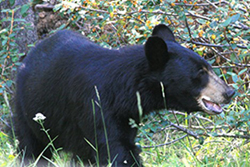
Bears
Black Bears are known to be present on the mainland, but there have been occasional sightings on islands. You may be lucky enough to spot one and can take some simple steps to ensure your encounter is a safe one. Please report all Black Bear observations to park staff. Please read You are in bear country for more information.
Coyotes
Coyotes are common on the mainland and larger islands of the park, but may be encountered anywhere.
Nationally, Parks Canada is working with experts in coyote behaviour, wildlife management, and human behaviour and education to develop and implement best practices for public safety. Visitors to any park or natural area should be aware of the risk of wildlife encounters.
Here's what you can do to improve your personal safety:
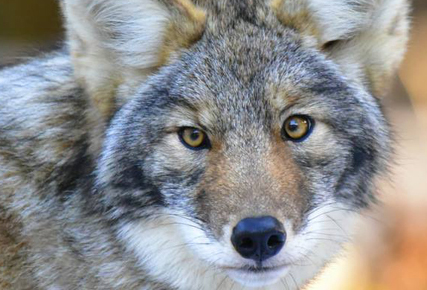
- Do not feed coyotes and be sure to properly dispose of garbage and other food sources. Coyotes that have access to our food lose their fear of people.
- Hike with friends or carry a solid walking stick.
If you see a coyote at a distance:
- Stay back. Do not approach the animal.
- Watch it carefully to assess its behaviour (e.g. Is the animal following you, acting without fear, openly aggressive, fearful, wary, etc.?)
If the coyote approaches or is close by:
- NEVER run away. (Coyotes are capable of running much faster than humans.)
- Maintain your distance by walking away slowly. Do not turn your back.
- Stay together and try to scare the animal away.
- Make noise, swing sticks, and generally act big and aggressive.
If a coyote attacks:
- Fight back. Shout, swing a stick, throw stones, use whatever is available to defend yourself.
- Report all coyote sightings to Parks Canada staff. If approached by a coyote, report the incident immediately.
To learn more:
Parks Canada Coyote Habitat Brochure
Canadian Wildlife Federation
- Date modified :